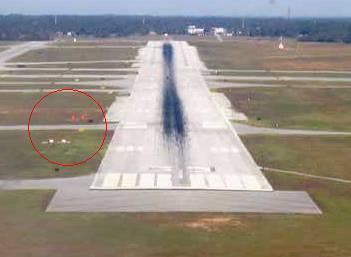 | ||
The visual approach slope indicator (VASI) is a system of lights on the side of an airport runway threshold that provides visual descent guidance information during approach. These lights may be visible from up to 8 kilometres (5.0 mi) during the day and up to 32 kilometres (20 mi) or more at night.
Basic visual approach slope indicators consist of one set of lights set up some 7 metres (23 ft) from the start of the runway. Each light is designed so that it appears as either white or red, depending on the angle at which it is viewed from. When the pilot is approaching the lights at the proper angle, meaning the pilot is on the glide slope, the first set of lights appears white and the second set appears red. When both sets appear white, the aircraft is too high, and when both appear red it is too low. The first set of lights appearing red and the second set white is not possible lest the plane were upside down or the approach was coming from above, which is virtually never. This is the most common type of visual approach slope indicator system. A mnemonic to remember the colors and their meaning is :
White over White, you're high as a kite. / you'll fly all night
Red over White, you're alright.
Red over Red, you're dead.
White over Red, unsaid / you're under head. ("White over red" isn't actually possible unless the VASI installation is badly off, or else if you're upside down on final.)
